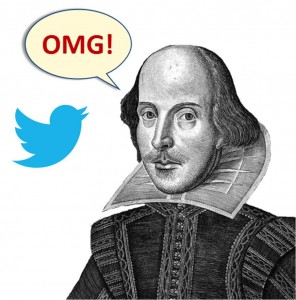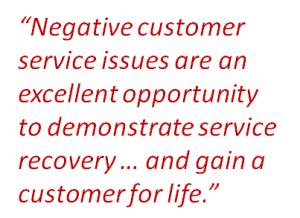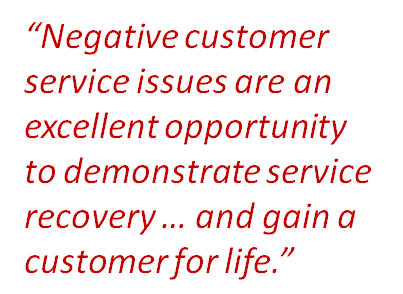This is the second in a two part series about Crisis Communication in Healthcare by Sally Romoser, Healthcare PR Strategist. The following post addresses “Crisis Communication and Social Media.” The prior post addresses the need for healthcare organizations to have a comprehensive Crisis Communication Plan in place … prior to there being a crisis.
 At Disney University, a training organization on Disney culture, heritage, values and polices, students (who are also employees) are called “cast members.” This paragon of customer service understands, and so underscores to empl— oops (!), I mean cast members, that, as Shakespeare so famously stated, “All the world’s a stage.”
At Disney University, a training organization on Disney culture, heritage, values and polices, students (who are also employees) are called “cast members.” This paragon of customer service understands, and so underscores to empl— oops (!), I mean cast members, that, as Shakespeare so famously stated, “All the world’s a stage.”
And when cast members are working … they’re on stage. They must give a performance; they are expected to not only perform their job, but to play a role. As such, there are standards of behavior that are required when they are “on stage,” and rules of conduct when they are “off stage” and away from the eyes and ears of the customer.
As the first corporate university, Disney developed these behavior standards for their employees long before the advent of the 24-hour news cycle, smart phones with video cameras, wireless Internet with instant access to social media sites for near-real-time posting. Yet, today it seems acutely profound, because ubiquitous phone cameras with video film-making capabilities present a new reality: everybody’s a potential news reporter, an audience recording the show of life on the stage around them.
Crisis communication and social media … new tech creates new challenges for healthcare providers
Not so very long ago, reporters and news crews called ahead for an interview or simply showed up. There was some degree of expectation about when the executives of hospitals, nursing homes, medical groups and other healthcare organizations, their employees and sometimes their clients or customers were being filmed. Today, anyone with a cell phone may photograph or videotape your organization in any number of unguarded moments. Then, within minutes (or less), post it to the world for general consumption.
It’s an exciting prospect. It’s also a frightening one for healthcare providers. It brings virtually limitless possibilities for the making, or the ruination, of an individual employee, a provider or even an entire healthcare organization.
Healthcare organizations take note: how United Airlines’ failed the test
Savvy healthcare providers are studying the impact of social media and incorporating best practices into their own crisis management plans and activities. There also are great examples from outside healthcare that can vividly illustrate potential pitfalls.
Case in point: when a United Airlines passenger clearly saw baggage handlers toss and fumble his guitar, thereby breaking it, he entered into a year-long tussle seeking reimbursement from the airlines. After numerous letters, forms and phone calls, he received a final answer: United did not assume liability and therefore would not pay his claim.
Frustrated, the musician penned and then filmed his own protest music video, “United Breaks Guitars,” and posted it on YouTube. It’s worth a look (below) to understand how sophisticated today’s consumers may be (healthcare included), and how social media can take an otherwise isolated issue and vaunt it into the headlines.
The video went viral, garnering a million hits in just four days. As a result, the story (and an interview with the now-redeemed passenger/musician turned author) was aired on several major news networks nationwide. Today, more than 150 million people know this story … and that figure will continue to grow (forever) as it’s become such an iconic example of social media’s impact on organizations who should proactively safeguard their brand … and plan for the possibility of making a painful misstep.
Crisis Management: the financial consequences of underestimating the impact of social media
United’s stock plummeted 10 percent and lost $180 million in value as a direct result of this incident. The impacts on its reputation, brand and corporate value are more difficult to quantify, but have no doubt taken a significant hit. The foremost study ever conducted on the impact of crises on shareholder value showed a marked differential between those who were considered “recoverers” and those companies who did not fully recover, but who suffered cumulative net negative impact of 15 percent.[i]
So what began as a routine customer service issue escalated to a major corporate crisis management issue solely because customers who are angry enough or creative enough to get attention now have the power of a global voice through the Internet and the many social media channels available. With that in mind, healthcare providers need to realize that everybody’s a potential reporter.
For healthcare organizations, crisis communication and social media are now synonymous
It’s critical for healthcare organizations to recognize and respond to the power shift social media has created in crisis communications and the new paradigm it creates with instant, open access and viral nature.
We believe in comprehensive crisis communications planning and training not just because it’s so essential when your healthcare organization is under fire, but also because everyone in the organization should understand some of the basic tenets of crisis communications. Leaders need a working knowledge of the plan process as well as an understanding of their accountability for educating direct reports about the policies and procedures that affect them. Seasoned healthcare executives know that every employee is an ambassador, and that behavior standards and messages should align across business groups, divisions, locations and job grades.

The Bard’s final word …
Healthcare providers need to take note and recognize how crisis communication and social media have reset the stage for damage control … even on the simplest things. With endless opportunities for the public to catch our act when we least expect it, it suffices to say … “To be, or not to be prepared … that is the question.”
[i] One of the foremost recognized studies conducted on the impact of a catastrophe on the stock value of an organization was completed by Dr Rory Knight and Dr Deborah Pretty (1996, Templeton College, University of Oxford – commissioned by the Sedgewick Group). This study undertook a detailed analysis of the stock price (post impact) of organizations that had experienced catastrophes. The study identified organizations that recovered and even exceeded pre-catastrophe stock price, (Recoverers), and those that did not recover on stock price, (Non-recoverers). The average cumulative impact on shareholder value for the recoverers was 5% plus on their original stock value. So the net impact on shareholder value by this stage was actually positive. The non-recoverers remained more or less unchanged between days 5 and 50 after the catastrophe, but suffered a net negative cumulative impact of almost 15% on their stock price up to one year afterwards.

